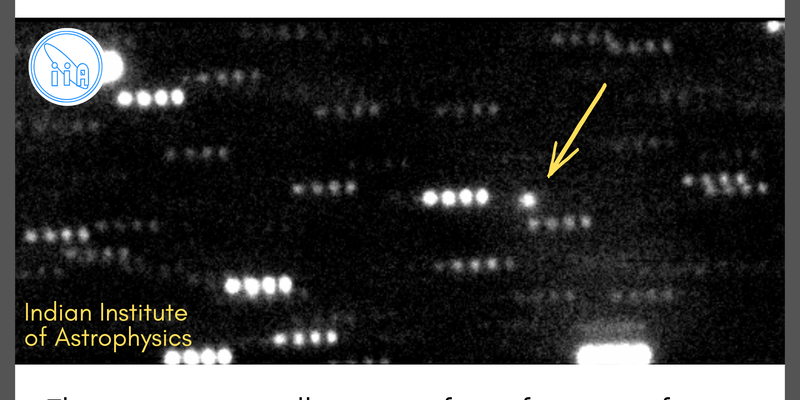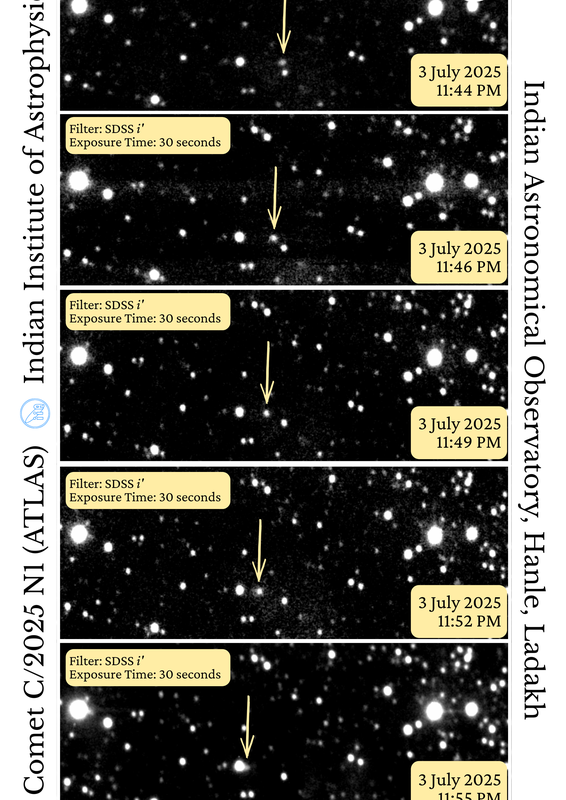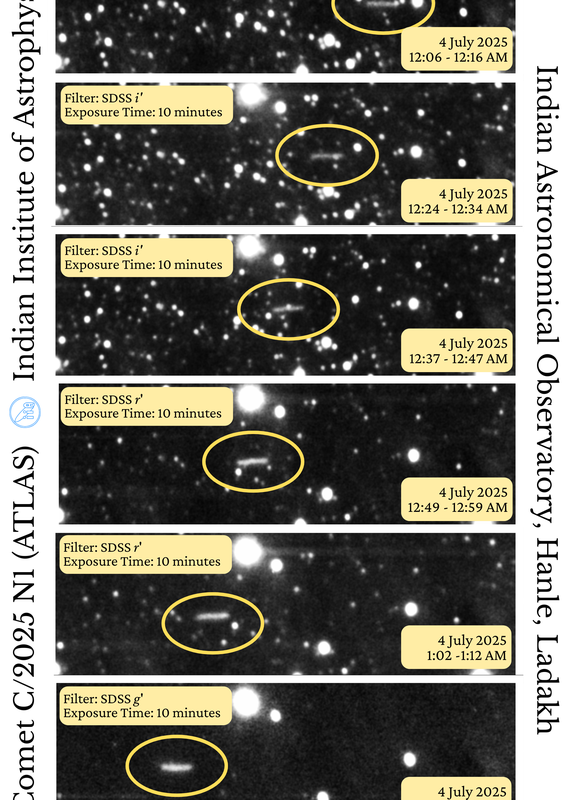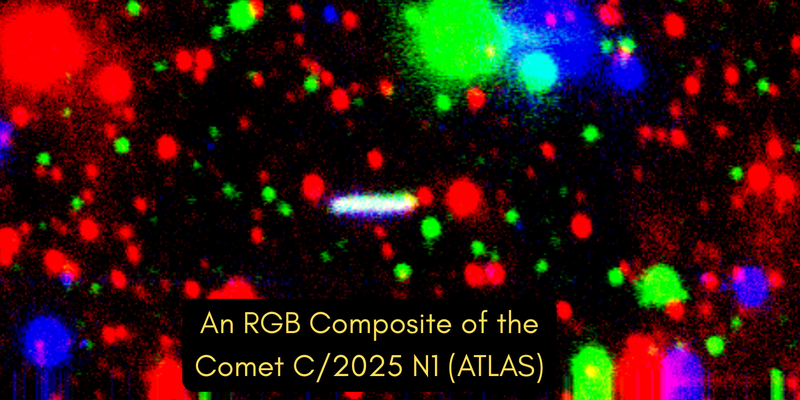Comet C/2025 N1 (ATLAS) aka 3I/ATLAS
The comet C/2025 N1 (ATLAS), also known as 3I/ATLAS, is the third interstellar visitor to the Solar System, and was first spotted on 1 July 2025 by the Asteroid Terrestrial Impact Last Alert System (ATLAS) telescope in Chile. At that time, it was about 4.5 AU from the Sun and had a relative speed of 61 km/sec. Since the object was already moving much faster than the escape velocity at that distance, and its orbit was soon calculated to be hyperbolic with an eccentricity of about 6.2, it was immediately clear that it was not gravitationally bound to the Sun. This high speed cannot be due to the acceleration by the Sun’s gravity alone; it must have entered the Solar System with this high initial velocity. Objects in the distant Kuiper belt and the Oort cloud of our own Solar System have speeds of only a few km/sec to just a few hundred m/sec. The relative velocities of stars in the solar neighbourhood are roughly 10 - 30 km/sec, and that is roughly how fast the interstellar visitors are likely to move. All of this leads to the conclusion that C/2025 N1 (ATLAS) must have come from outside the Solar System.
C/2025 N1 (ATLAS) is bigger, faster, older, and already brighter than the two previously known interstellar visitors, which were the asteroid Oumuamua (2017) and comet Borisov (2019). There is already some evidence for outgassing from the new visitor, and it has been classified as a comet. It is expected to get brighter by around October 29 when it reaches perihelion at a distance of 1.4 AU from the Sun.
We observed the comet with the Himalayan Chandra Telescope (HCT) of the Indian Astronomical Observatory (IAO) at Hanle, Ladakh, on the night of 3rd July 2025 in three SDSS filters g', r' and i'.
Figure 1 co-adds four short exposures while shifting each frame to keep the location of the moving comet the same. This therefore shows four individual images of each star, whereas the comet seems stationary. In Figure 2, we present a montage of five 30-second short exposure images of the comet taken one after another, where the comet can be seen to move quite fast from one image to the next. Figure 3 shows a montage of six 10-minute exposures, wherein we can not only see the motion of the comet between individual frames, but also its motion within each 10-minute frame, visible as a streak. Figure 4 is an RGB image of the comet, which is a combination of frames taken in g (blue), r (green) and I (red) filters, each of 10 minutes exposure, and aligned on the comet's opto-centre. The colors are a result of the imaging technique rather than of intrinsic properties of the stars.
For further information, please contact us at outreach@iiap.res.in
The observations were carried out by Margarita Safonova (MPBIFR), Niruj Mohan Ramanujam (IIA), Surya Prakash (IIA), and Hrishav Das (IIA). The data analysis was carried out by Margarita Safonova, and the final images and videos were made by Vikranth Pulamathi (IIA). We thank Prof. D. K. Sahu for observation related support.



